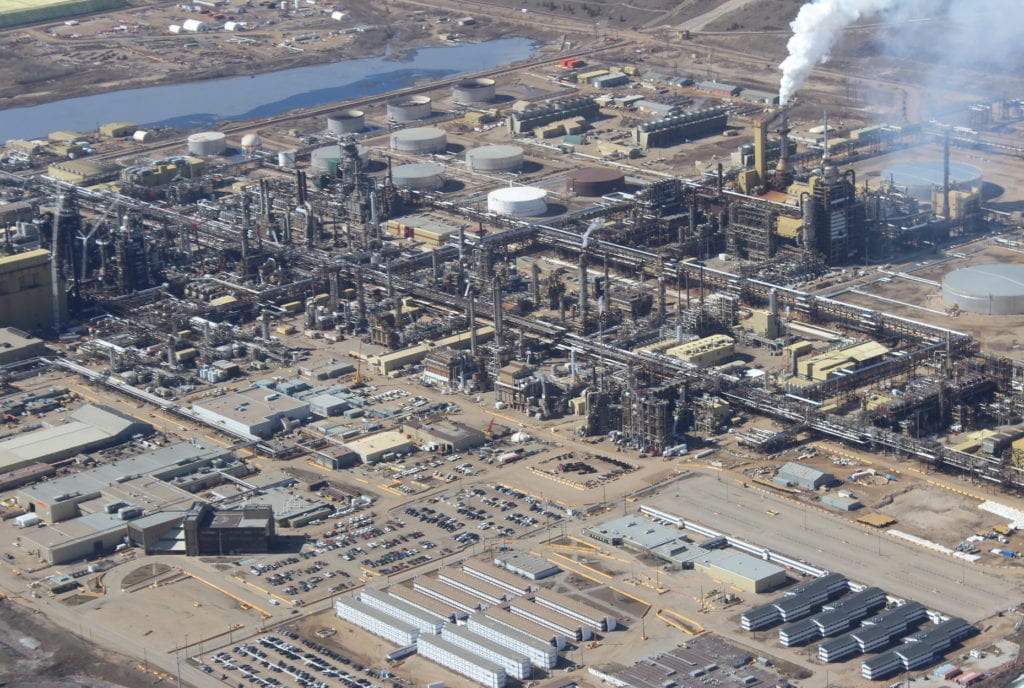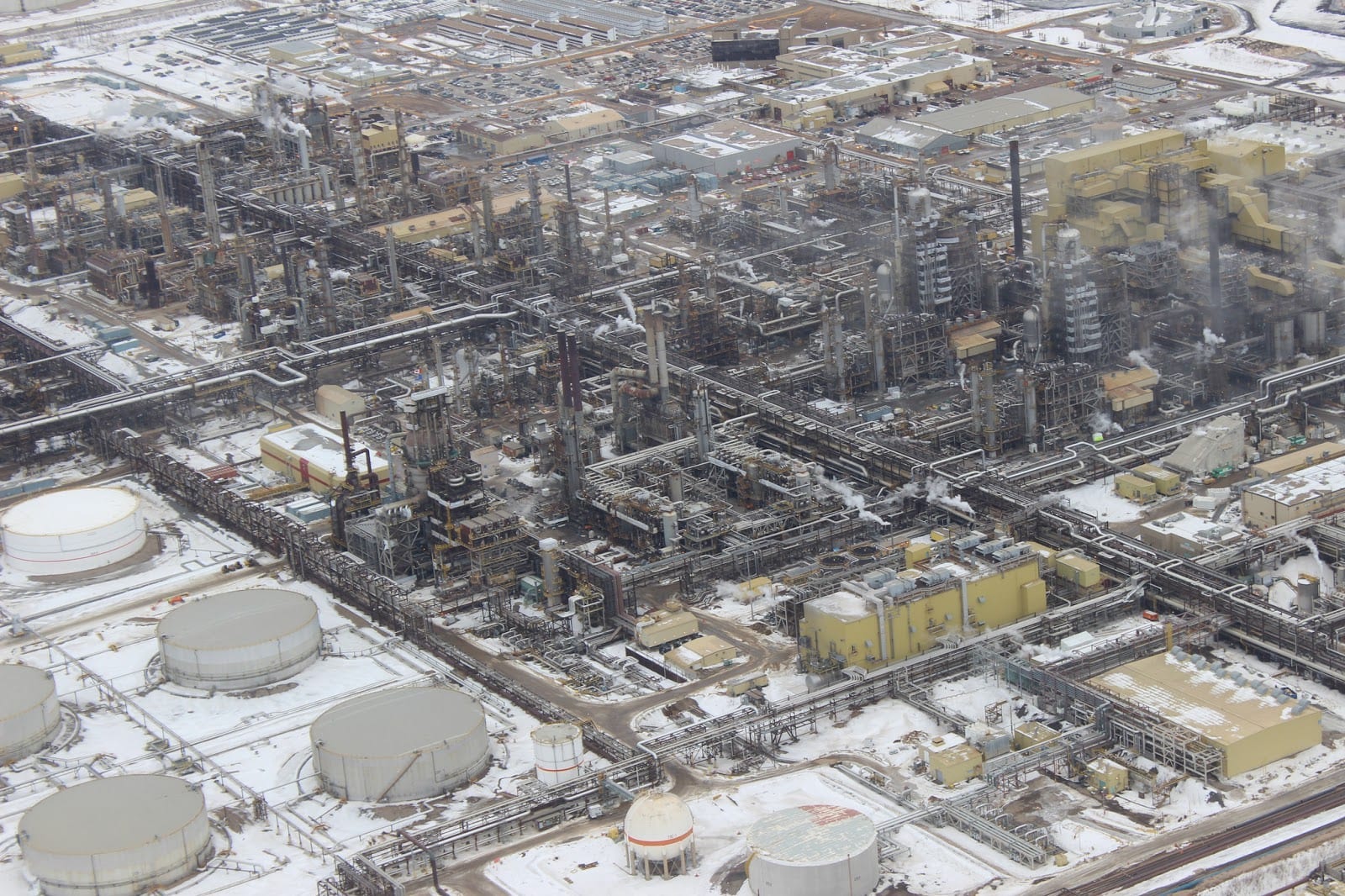By shedding its reputation for caution, the Canadian oil & gas industry aims to compete with American competitors that have gone all in on innovation.
With the equivalent of 171 billion barrels of petroleum, Canada is home to some of the largest oil reserves in the world. Most of this energy is locked up in oil sand deposits, a vast formation of sand, water, clay and bitumen (asphalt) located in the western Canadian province of Alberta. Extracting oil from this gooey mixture is complicated and expensive, and takes place across a vast area of remote northern boreal forest surrounding the northern boom town of Fort McMurray.
“Compared to other industries, oil and gas companies are faced with a unique set of problems when it comes to reducing costs and increasing margins and improving their field service delivery,” says Geoffrey Cann, an author and consultant who advises energy companies on digital technology adoption. “They operate in an always-changing business environment that threatens to slash hard-won margins at a moment’s notice.”

A Syncrude upgrader facility near Fort McMurray, Canada. Image: Creative Commons/Jason Woodhead
Energy is big business in Canada. Global energy giants including Chevron and Imperial Oil spend tens of billions of dollars each year in Alberta to extract and pipe away the bitumen from the oil sands mining and drilling sites. Getting the oil out of the ground is costly, a problem compounded by something relatively new in Canada’s oil patch: wildly fluctuating oil prices, an ongoing skills shortage and intense competition from new producers in the United States.
In an increasingly risky environment, Canadian energy producers need to somehow increase productivity while transforming their operations with new technologies.
A Legacy of Inefficiency
Cann says that in the past, Canadian oil and gas companies focused on maximizing production, rather than on making their operations more efficient. Businesses, for example, typically used Excel spreadsheets to coordinate the efforts of teams sent out to work a service call. But it didn’t matter. Margins were high, and efficiency just wasn’t a priority.
But that’s changing.

Geoffrey Cann
“Sending teams out to service remote facilities puts people into dangerous situations and burns carbon,” Cann says. “Services aren’t well-coordinated. If you need to work on a well, you might need to coordinate five companies.”
At most well sites, there are multiple service organizations that handle disparate tasks. A single service call might require a variety of highly specialized service technicians, some might who work with the high voltage that energizes a well site, others who work on down-hole piping or pressurized reservoirs.
In the past, when margins fell, they tended to bounce back quickly. Optimization technology was seen as an unnecessary — that is, until 2014, when global crude prices were cut in half, causing a crisis in Alberta’s capital-intensive heavy oil industry. The Canadian energy sector has weathered oil busts in the past, the 2014 decline in prices came at a time with surging U.S. production of shale oil in North Dakota, Texas and other states.
“The American shale boom has shifted the economics of the industry,” Cann says.
It can cost C$10 billion to launch a new heavy oil sands mine in Canada, Cann says, or hundreds of millions of dollars (CAD) to build an “in situ” bitumen steam extraction facility. In the United States, setting up a shale oil drilling operation, where gas and oil are recovered after hydraulically fracturing or “fracking” rock, can cost as little as $10 million.
Compared to other industries, oil and gas companies are faced with a unique set of problems when it comes to reducing costs and increasing margins and improving their field service delivery. — Geoffrey Cann
While Canadian energy producers must compete with a torrent of cheaper oil from the south of the border, American shale oil producers also have another ace up their sleeves, according to Cann.
The relatively cheaper cost of fracking, combined with much quicker project turnarounds means American oil producers can integrate technology that improves their productivity every time they drill a well, Cann says. In Canada, where larger energy companies are more cautious, new technologies are tested in small pilot projects before being adopted.
A rebound in global oil prices, plus a large refinery infrastructure in the United States developed specifically to handle heavy oil, has meant Canadian energy producers can still compete with the fracking industry. However, the Canadian oil patch is now focused on using technology to improve productivity and to boost margins.
Trying Out New, Innovative Tech
There are many opportunities for Canada’s energy sector to reduce costs, mitigate occupational safety risks and improve safety, Cann says, and adopting new technologies like intelligent sensors and autonomous vehicles are a top priority. Many are already in the early stages of implementation in the Canadian energy sector.
Take Osprey Informatics, an Alberta-based tech company that has participated in projects that introduce new technologies into the oil patch, and counts several large energy companies as both customers and investors. Osprey offers an intelligent visual monitoring solution that improves security and reduces the need to send service teams into dangerous situations. The cloud-based technology captures and analyzes visual data from field operations, assets and facilities, and then automatically provides actionable alerts and insights
“You can have a camera mounted on the frame of a pump jack to ensure there are no leaks, or do remote inspections of the compressor station or a midstream processing plant, or have a camera pointing at hazardous zones or truck entry areas,” says Jeremy Bernard, Osprey’s CIO. “Our solutions take repetitive tasks away from people. Nobody wants to sit all day in front of a monitor watching trucks or people coming and going.”
Osprey’s tech also makes use of cloud-based artificial intelligence to analyze the video footage and send out notifications when something goes wrong, such as a leak or a spill. The system even recognizes the difference between a human trespasser damaging or stealing equipment and, say, a deer that hops a fence searching for food.
Overcoming Regulation Hurdles
Compared with the U.S. oil & gas operators, cloud-based services are a relatively new practice for Canadian oil companies. Most cloud service providers such as Amazon AWS, Microsoft Azure or IBM Cloud are located in the United States, which can be a barrier to Canadian companies that must comply with some of the world’s strictest national and state-level data privacy regulations. The sheer cost of transmitting wireless data in Canada compared to the United States has been another roadblock to innovation.

An oil processing facility near Fort McMurray, Canada. Image: Creative Commons/Kurt Bauschardt
“The cost of transmitting data to connect service teams traveling to remote locations using public networks or satellite can get very expensive,” says Ryley MacKenzie, CEO of Expeto. “Some energy companies can build their own private cellular networks in remote locations, but it can be very complicated and expensive to manage devices and their connected “things” as workers travel between remote projects and their operations base.”
Expecto aims to make it easier and cheaper for resource companies to bridge private and public networks and manage devices and secure data — all while securing data and conforming to Canada’s strict privacy regulations. This is critical to the growing class of industrial internet of things technologies that require a reliable data connection to be effective, and a particular challenge in remote areas where cellular networks are unreliable.
One oil company uses Expeto’s tech to transmit data from flow pumps and devices located in different parts of the company’s infrastructure, making it easier to detect problems and schedule service teams.
“We’re at the early stages of what will be another transformative change to the oil and gas sector,” says Cann, the energy industry consultant. “The impacts of digital on many other industries are now plain, painful and pivotal.”


Share this: